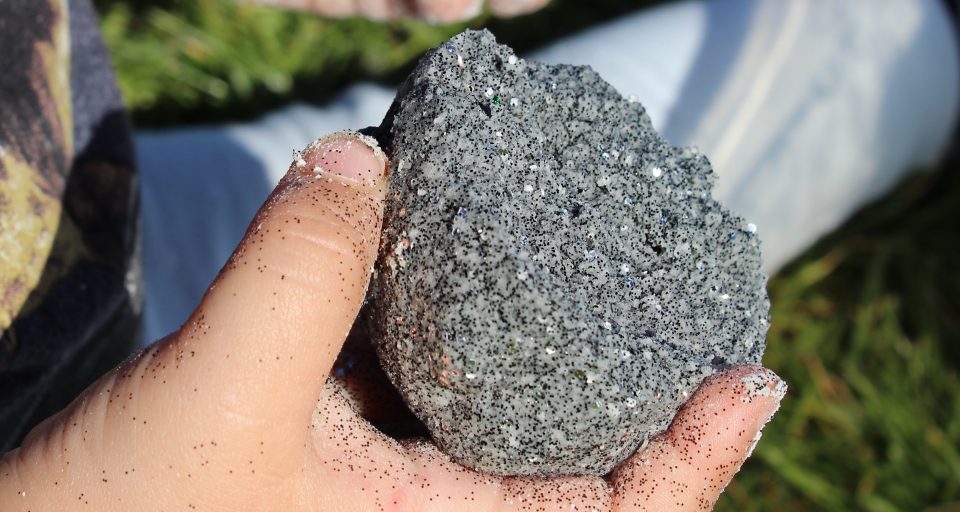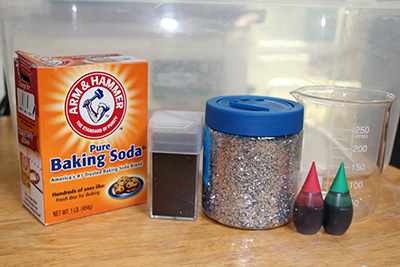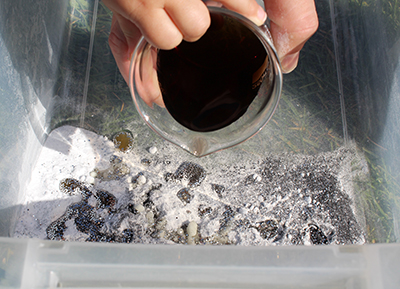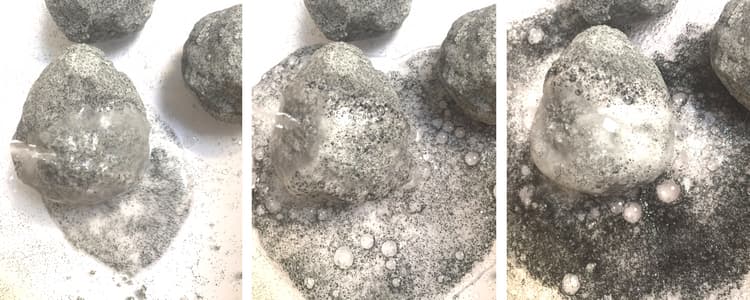
Make Dissolving Moon Rocks
Learn how baking soda and vinegar react when making this dissolving moon rock dough! The dough comes together easily and is fun to work with. Once you’re done playing, just add vinegar to your dried rocks and watch them melt away!

Moon Rock Supplies
- Disposable gloves
- Box of baking soda
- Food coloring (red + green)
- Water
- Black glitter
- Silver glitter
- Eye protection
- White vinegar

How to Make Dissolving Moon Rocks
1. Put on disposable gloves to keep baking soda from irritating skin. Pour the entire box of baking soda into a plastic container or large bowl. Sprinkle glitter on top until the mix begins to sparkle. (Note: When working with glitter, be careful not to touch your eyes.)
2. Combine 1/2 cup of water with two drops of red food coloring and two drops of green food coloring. Water should appear blackish-brown in color. Set aside.
3. When you have a nice glittery baking soda mix, slowly add the colored water.
As you add more water, you’ll notice that the baking soda gets to a good consistency so that you can make your moon rocks into balls. Be careful not to add too much water, though, as it will make the baking soda dissolve.
The rocks should hold together without much trouble.

4. Once you’ve finished working with the dough and have made the moon rocks, leave them out in the sun or a warm, dry spot to harden. Depending on your weather, it might take a few days for them to set.
5. When the moon rocks have dried, put them back into the plastic bin or bowl (this will help contain the mess that is about to happen). Put on disposable gloves and eye protection, then slowly dribble vinegar over the top and observe the reaction! Baking soda and vinegar combine and create carbon dioxide, which makes a bubbling sludge.

What’s the Science Behind It?
It’s chemistry! When baking soda (a base) and vinegar (an acid) are mixed, their reaction creates carbon dioxide gas. The carbon dioxide escapes, and that gas forms the bubbles you see on the outside of the rocks when vinegar is poured over them.
Conversation may happen naturally with your kids, but in case it doesn’t, here are a few questions you can ask them:
- Would this reaction really happen on the moon?
- Hint: Probably not. The moon’s atmosphere is very thin and consists of different elements than Earth’s, so the reaction would likely be different. No one has tested a baking soda and vinegar reaction on the moon yet, though. Maybe your child can be the first!
- Does the reaction work better on a completely dry moon rock or a freshly made, wet moon rock? Why might it work differently?
- What else might you be able to do with a baking soda and vinegar reaction?

